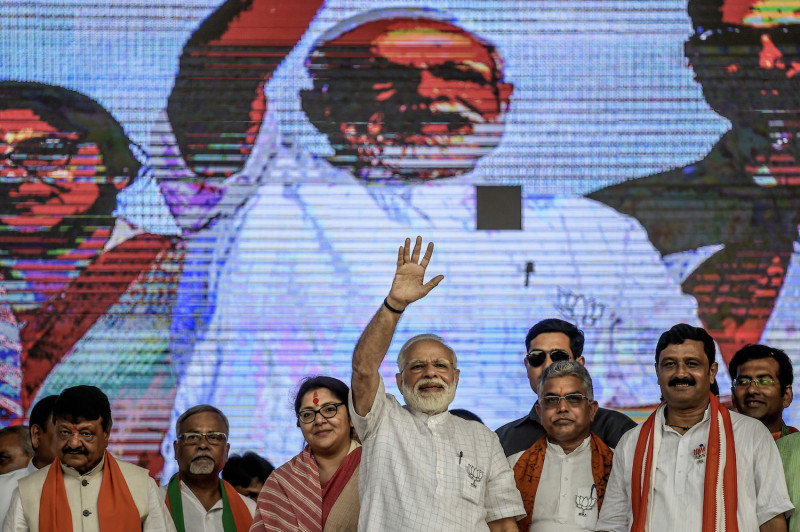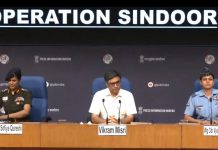
India’s claim that one of its fighter pilots shot down a Pakistani F-16 fighter jet in an aerial battle between the two nuclear powers in February appears to be wrong. Two senior U.S. defense officials with direct knowledge of the situation told Foreign Policy that U.S. personnel recently counted Islamabad’s F-16s and found none missing.
The findings directly contradict the account of Indian Air Force officials, who said that Wing Commander Abhinandan Varthaman managed to shoot down a Pakistani F-16 before his own plane was downed by a Pakistani missile.
It is possible that in the heat of combat, Varthaman, flying a vintage MiG-21 Bison, got a lock on the Pakistani F-16, fired, and genuinely believed he scored a hit. But the count, conducted by U.S. authorities on the ground in Pakistan, sheds doubt on New Delhi’s version of events, suggesting that Indian authorities may have misled the international community about what happened that day.
The news comes just days before the start of India’s general elections, in which Prime Minister Narendra Modi is seeking another term in office. In the weeks leading up to the election, tensions between India and Pakistan escalated to levels not seen in decades after a Pakistan-based militant group killed more than 40 Indian security officers in a Feb. 14 suicide bombing in India-controlled Kashmir. Both sides have been accused of spreading disinformation and fanning nationalistic flames.
Although the news likely won’t sway Indian voters, Vipin Narang, an associate professor of political science at MIT, said the way the events have unfolded may affect India’s efforts to deter Pakistan in the future.
“As details come out, it looks worse and worse for the Indians,” Narang said. “It looks increasingly like India failed to impose significant costs on Pakistan, but lost a plane and a helicopter of its own in the process.”
The dogfight between the two nations occurred on Feb. 27, when India says a group of Pakistani jets entered its airspace in response to the first Indian air raid on Pakistani territory since a 1971 war. India scrambled its own jets and gave chase. During the aerial battle that ensued, Varthaman took a missile hit and ejected safely into Pakistani territory.
He was captured by the Pakistani army and released days later in an effort to de-escalate the crisis.
One of the senior U.S. defense officials with direct knowledge of the count said that Pakistan invited the United States to physically count its F-16 planes after the incident as part of an end-user agreement signed when the foreign military sale was finalized. Generally in such agreements, the United States requires the receiving country to allow U.S. officials to inspect the equipment regularly to ensure it is accounted for and protected. Some of Pakistan’s F-16s were acquired from Jordan through a third-party transfer, but even these are subject to the end-user agreement, said Richard Aboulafia, an analyst with the Teal Group, an aerospace and defense firm.
“If you are a user of American defense products … you need to go through a very clear process to send those weapons to a third party,” explained Aboulafia, noting that the United States has a rigid process in place to try to ensure its equipment does not fall into the hands of “hostile actors.”
Of Pakistan’s 76 F-16s, 13 were acquired from Jordan, according to fleet data provided to FP by Aviation Week & Space Technology.
Some of the F-16s were not immediately available for inspection due to the conflict, so it took U.S. personnel several weeks to account for all of the jets, the official said.
But now the count has been completed, and “all aircraft were present and accounted for,” the official said.
A second senior U.S. defense official with knowledge of the count confirmed that U.S. authorities on the ground found that no Pakistani F-16s were missing.
Evidence suggests that Pakistan’s F-16s were involved in the battle. The remnants of a U.S.-made AIM-120 air-to-air missile was found near the site; out of all the aircraft involved, only the F-16 can shoot such a weapon.
When the incident occurred, India asked the U.S. government to investigate whether Pakistan’s use of the F-16 against India violated the terms of the foreign military sale agreements.
However, the first defense official said the agreement did not involve any terms limiting the use of the F-16s.
“It would be incredibly naive for us to believe that we could sell some type of equipment to Pakistan that they would not intend to use in a fight,” the official said.
The U.S. State Department and the Indian and Pakistani embassies declined to comment.
Courtesy: Foreign Policy Magazine
















